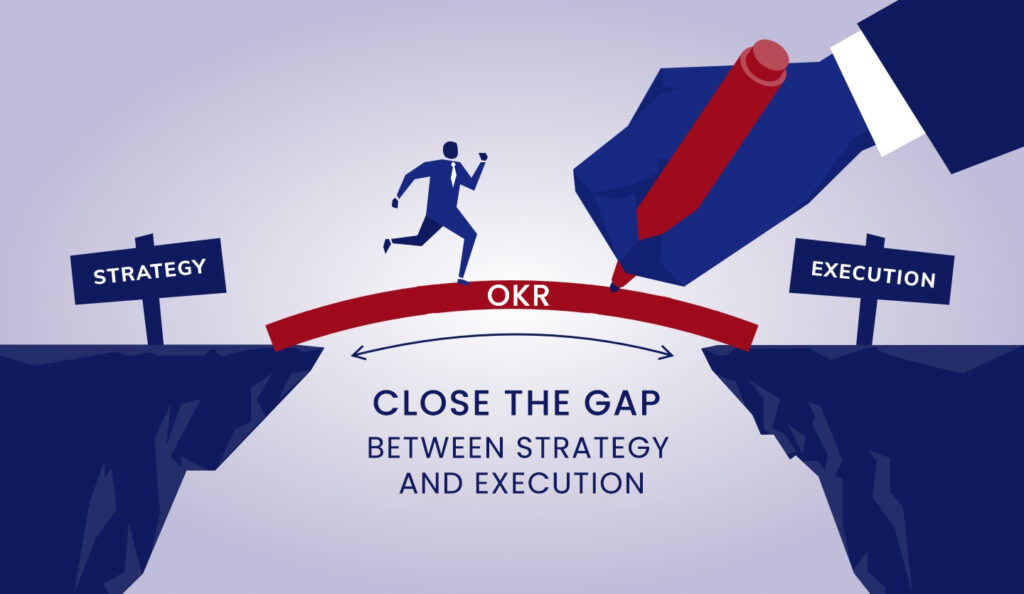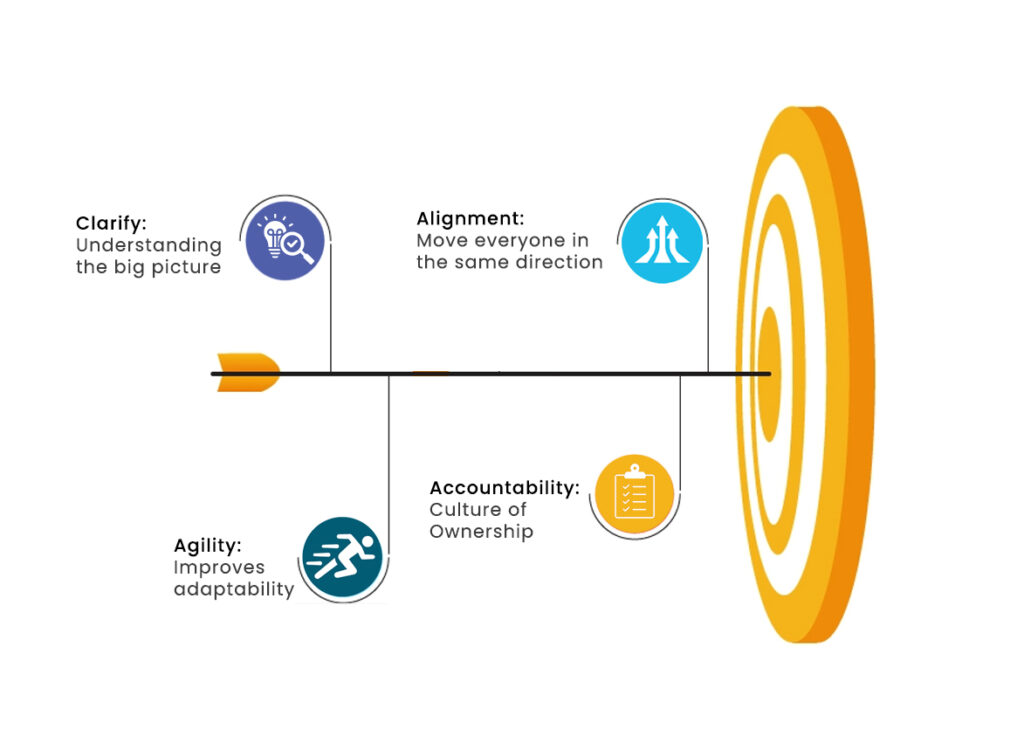Introduction
In today's dynamic business landscape, achieving organizational goals can be a challenging endeavor. To excel in such an environment, organizations need a clear roadmap and a disciplined approach to execution. Objectives and Key Results (OKRs) have emerged as a powerful methodology that enables organizations to align their efforts, set ambitious goals, and execute with precision. This article explores what OKRs are, how they facilitate focused execution, and why executives should consider them as their preferred strategy execution methodology. Additionally, we'll delve into the essential steps for implementing OKRs effectively within an organization.

Understanding OKRs
OKRs, short for Objectives and Key Results, are a goal-setting framework that originated in Intel and were later popularized by Google. At its core, OKRs comprise two main components:
- Objectives: Objectives are the high-level, qualitative goals that an organization aims to achieve within a specific timeframe. They articulate the desired outcomes and provide a sense of purpose for teams and individuals.
- Key Results: Key Results are the quantifiable, measurable metrics that track progress toward achieving the objectives. They serve as concrete indicators of success and help teams stay focused on the desired outcomes.
For example, an Objective might be "Launch a new product line," and the Key Results might be:
- KR1: Develop and launch 5 new products by the end of the quarter.
- KR2: Achieve $1 million in sales of new products in the first month.
- KR3: Achieve a customer satisfaction rating of 90% for new products.
The Power of Focused Execution with OKRs
- Alignment: OKRs promote alignment by ensuring that every team and individual understands the organization's overarching objectives and their role in achieving them. This alignment ensures that everyone is working toward a common purpose, reducing silos and enhancing collaboration.
- Clarity: OKRs provide clarity by breaking down high-level objectives into specific, measurable key results. This clarity helps teams prioritize their efforts and stay focused on what truly matters.
- Agility: OKRs are designed to be flexible and adaptable. In rapidly changing environments, organizations can pivot quickly by adjusting their OKRs to reflect new priorities and market conditions.
- Accountability: The measurable nature of key results encourages accountability. When individuals and teams have clear metrics to track, they take ownership of their work and strive to meet or exceed their goals.

Why Executives Should Choose OKRs
Executives should consider OKRs as their strategy execution methodology for several compelling reasons:
- Strategic Alignment: OKRs ensure that the entire organization is aligned with the overarching strategic goals. This alignment reduces the risk of pursuing divergent or conflicting initiatives.
- Focus on Outcomes: OKRs emphasize outcomes over outputs. Executives can ensure that everyone in the organization is working toward achieving meaningful results, rather than just completing tasks.
- Adaptability: OKRs allow organizations to adapt to changing market conditions and competitive pressures. Executives can shift priorities and resources quickly to seize new opportunities or address emerging threats.
- Transparency: OKRs foster transparency by making goals and progress visible to all employees. This transparency builds trust and empowers individuals to make informed decisions.
- Simple and easy to Adopt: OKRs are easy to implement and use. OKRs are a simple framework that can be used by companies of all sizes and in all industries.
- Agile: OKRs are aligned with the modern way of working. OKRs are agile and flexible, which is important in today's fast-paced business environment. They can be easily adapted to changes in the market or in the organization's strategy.
- Effective: OKRs are proven to be effective. OKRs have been used by some of the most successful companies in the world, including Google, Intel, and Amazon. These companies have found that OKRs help them to achieve their goals more effectively and efficiently.
Implementing OKRs Effectively
For executives looking to implement OKRs in their organization, here are key steps to ensure success:
- Organization Strategy: Start with a clear understanding of your organization's strategy. What are your organization's top priorities? What are you trying to achieve? Once you have a clear understanding of your strategy, you can start to develop OKRs that will help you to achieve those goals.
- Cascade OKRs throughout the organization. OKRs should be cascaded throughout the organization, so that everyone is aligned on the same goals. This can be done by holding a workshop where senior leaders share their OKRs with their teams, and then working together to develop OKRs for each team.
- Make OKRs transparent and accessible. OKRs should be shared with the entire organization, so that everyone knows what everyone else is working on. This can be done by publishing OKRs on a company wiki or intranet, or by holding regular OKR review meetings.
- Track progress and measure results. It is important to track your progress on your OKRs and to measure your results. This can help you to identify and address any challenges early on, and to celebrate your successes.
- Review and update OKRs regularly. OKRs should be reviewed and updated on a regular basis, typically quarterly. This is because the business environment and the organization's priorities can change quickly.
- Promote a Culture of Learning: Encourage a culture of continuous improvement and learning. Celebrate achievements, but also view setbacks as opportunities for growth and adjustment.
- Use OKR Software: Consider using specialized OKR software to streamline the OKR process, track progress, and provide visibility into the organization's performance.
Conclusion
OKRs have proven to be a highly effective methodology for organizations seeking focused execution and strategic alignment. Executives who embrace OKRs can steer their organizations toward greater success, fostering a culture of collaboration, accountability, and adaptability. By implementing OKRs thoughtfully and consistently, organizations can navigate the ever-changing business landscape with confidence and achieve their most ambitious goals.



